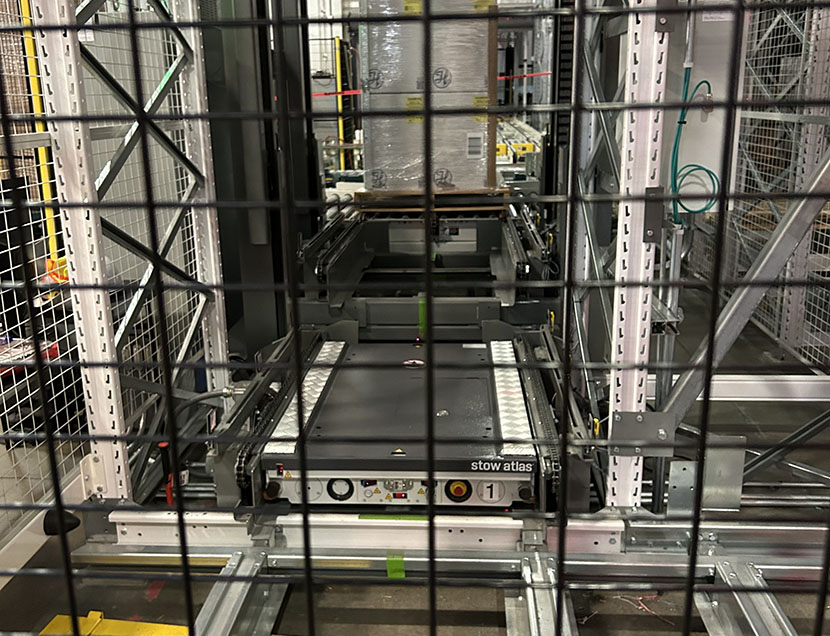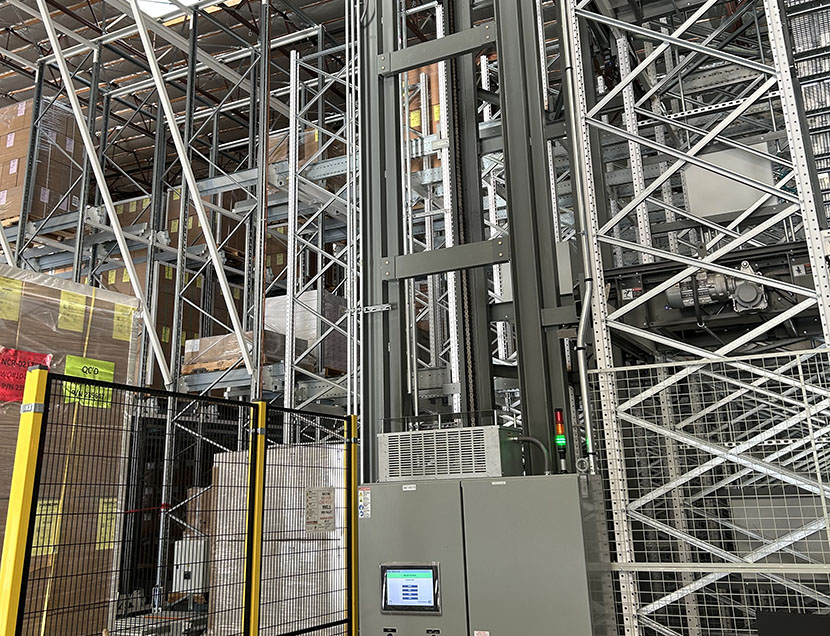Automated VRC for AGV Rack System Retrieval and Storage
Introduction
VRC and Controls integration for fully automated AGV Rack Retrieval and Storage System
Project Challenge
The end user of this project is a cutting-edge company delivering fully automated liquid handling systems to leading manufacturers. They specialize in the development and manufacturing of precision measurement devices, automated liquid handling workstations, and sample management systems. Having firsthand experience with supplying automated solutions, the company found themselves needing to improve their manufacturing workflow with a new approach for integrating multiple systems.
The company relies on AGVs to move pallets around their facility. They wanted an automated solution for moving AGVs and pallets to their multi-story rack system to speed up the process for retrieving and storing palletized materials. This requires a network of connected equipment with other system integrators.
Everything had to come together precisely for the system to work. Speed, footprint, load stability, platform size, controls integration & configurations – all the requirements Autoquip had to consider when designing the VRC and control system that would be part of this automated system.
Our Solution
Autoquip engineered a customized 4 Post Mechanical Freight Lift with a small platform sized to carry the AGVs. Our 4 Post VRC was selected for its stability and minimize chain stretch when loaded. To further enhance stability of the design, our engineering team added a stability wheel on the back side of the platform to keep it from moving when the AGV rolls onto the carriage. Dual-strand drag chain conveyors are positioned on the VRC platform to carry the AGV, pallet with load or both. Drag chain conveyors are also located at each shelf level to transfer the product from the rack system onto the VRC. Through a communication control network, the VRC will send the AGV with or without pallet to the commanded level. The conveyors are made so there is a space between the chains that will allow the AGV to slide in. There are also stops that are linearly actuated mounted between the lift and the rack shelf that will give permission for the AGV or pallet to go on/off the lift. Photo-eyes sense when the pallet is centered along the length of the conveyor.
Controls Integration:
Integrating the systems meant that our VRC lift would operate autonomously through network commands. OSCO Controls, Autoquip’s in-house controls division, served as mediator for all systems outside the inventory management. Our task was to communicate with the vendor that handled the inbound and outbound conveyors. This involved close collaboration with them to determine when there was a pallet to pick up and communicating with them when we were commanded to discharge a pallet on the outbound side. To inbound, we would communicate with the inventory management system that a pallet was available and ready for pickup. Upon being commanded to go to the position, we would capture and package barcode information for the specific product that was being conveyed into our VRC, send a signal to start conveying to the inbound conveyor controller, and create custom tracking data so that the inventory management system could track the pallet through the rack system. Once the pallet was onboard the VRC, the inventory management system would command us to go to the level where that pallet was to be stored. Once we completed the move to the commanded level, we would then send a message through the network stating that the command to move to a level had been completed which the WMS (warehouse/inventory management system) would acknowledge and immediately follow up with a command to discharge the pallet to the conveyor associated with the level the lift was at. This was done in reverse on the outbound side.
The project collaboration was unique as it involved communicating directly to the vendors controller anytime AGVs were being commanded to interface with the VRC or level conveyors. At all times, the VRC controls were communicating to the AGV controller the status of each drop zone (level conveyors and 15 staging lane areas inside the storage racks). These status notifications served as permission for the AGV to either drop or pick a pallet from a specific location. When the AGV requested to drop a pallet in a specific location, the VRC would turn that into data to be sent to the WMS to essentially know that there is now a pallet at that location and here is the tracking info for it. When the WMS determines what to do it would then command the VRC to convey onto the VRC platform, move the pallet to a specific level, discharge to a conveyor or out of the system. The AGV interface also served as permission for the AGVs to dock and undock from the VRC lift. This served to transport AGV from level to level for various reasons (maintenance, charging, the need for an extra AGV on a specific level due to high volume, etc.).
AQ Project#
160863
The Results
Autoquip offers a full range of expertise with deep knowledge in integrative systems and controls technology. Our experience goes beyond lift equipment manufacturing to building solutions with control systems that are compatible with other manufacturing equipment and combining various automated systems for a seamless integration.

